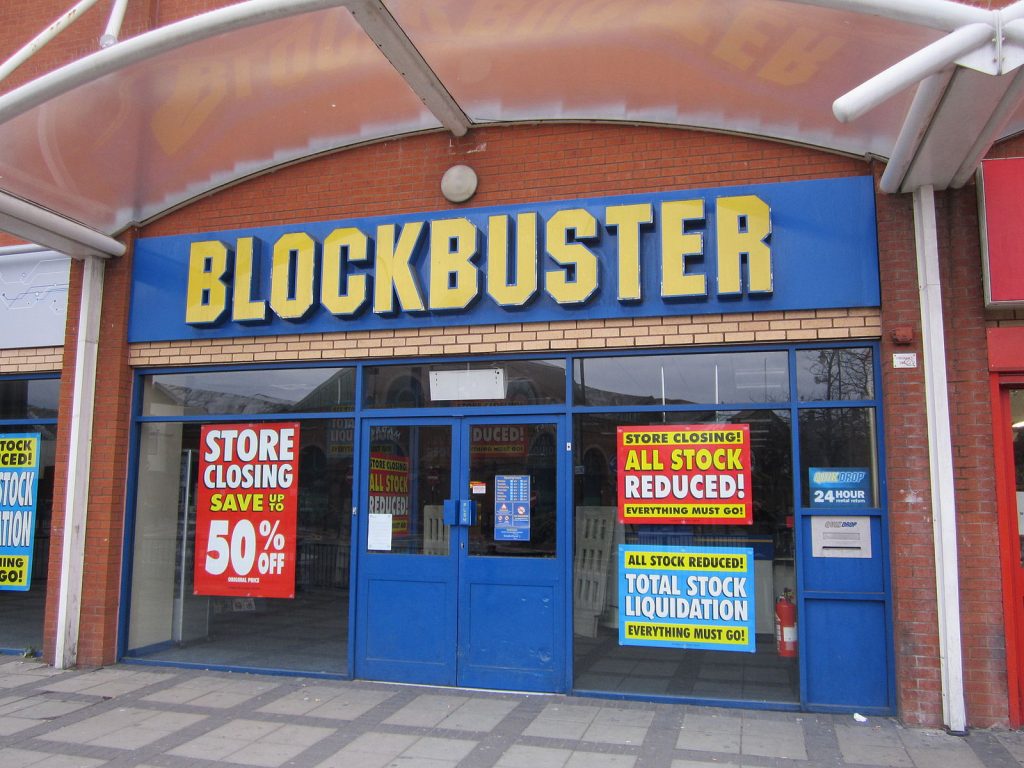You Also Have To Survive Victory

GUEST POST from Greg Satell
In early 2004, Viacom announced it would spin off Blockbuster Video, leaving CEO John Antioco master of his own fate. He moved quickly to meet the threat posed by Netflix head on, launching Blockbuster Online in 2004 and, after successfully testing the concept in a few markets, ending late fees in early 2005.
Still, not satisfied with playing catch-up, Antioco searched for model that would return his company to dominance. He found it in 2006 with the Total Access program. Within a few weeks of announcing the promotion, Blockbuster was winning the majority of new subscribers, outstripping Netflix for the first time.
It was a textbook case of sound strategy and execution meeting a disruptive threat, but it would not end well. In 2010 Blockbuster would declare bankruptcy and become a cautionary tale. We tend to think that driving change is merely a matter of coming up with a clever plan and executing well. Yet that isn’t enough. You also need learn how to survive victory.
Defying Critics And Beating The Odds
John Antioco was the quintessential American success story. Starting from humble origins as a management trainee at 7-Eleven, he rose to become a senior vice president at the company. He then moved on to run the struggling Circle K convenience store chain, which he turned around in just three years before moving on to Taco Bell and working the same magic there.
So when he joined Blockbuster as CEO in 1997, he was ideally suited to the job. Early in his tenure, he came up with a program to share rental revenues with the movie studios rather than buying the videos directly.The strategy improved the firm’s cash position and its access of high demand movies, while also allowing it to increase its marketing budget. It was a stroke of genius.
“The experienced video executives were skeptical,” Antioco would later tell me. “In fact, they thought that the revenue-sharing agreement would kill the company. But throughout my career, I had learned that whenever you set out to do anything big, some people aren’t going to like it. I’d been successful by defying the status quo at important junctures and that’s what I thought had to be done in this case.”
So Antioco approached the Netflix problem in the same way. He assembled a team of talented executives, came up with a strategy and worked to execute it flawlessly. Yet although his efforts were initially successful, there was a flaw in his plan that he didn’t see at the time and it would lead to Blockbuster’s downfall.
Failing To Align Stakeholders
Not everybody was thrilled with the moves Antioco made. Franchisees, many of whom had their life savings invested in their business, were suspicious of Blockbuster Online. They only owned 20% of the stores, but could make their displeasure known. The moves were also expensive, costing roughly $400 million to implement, and investors balked.
So while Blockbuster was making progress against the Netflix threat, as earnings turned to losses, its stock took a beating. The low price attracted corporate raider Carl Icahn, whose heavy-handed style made managing the company difficult. Things came to a head in late 2006 when Icahn demanded that Antioco accept only half of the bonus he was owed.
“I was at a point, both personally and financially, that I had little desire to fight it out anymore,” Antioco told me. He negotiated his exit early the next year and left the company in July of 2007. His successor, Jim Keyes, was determined to reverse Antioco’s strategy, cut investment in the subscription model, reinstated late fees and shifted the focus back to the retail stores.
When Blockbuster declared bankruptcy in 2010, the event was portrayed as corporate America’s inability to navigate digital disruption. Yet, as we have seen, nothing could be further from the truth. The management team came up with a viable strategy, executed it well and proved they could compete, yet still were unable to survive that victory.
Building Shared Purpose And Shared Consciousness
When General Stanley McChrystal took over command of special forces in Iraq, the situation he encountered was surprisingly similar to that of Antioco and Blockbuster. A well-led, well-resourced and highly efficient organization was faced with a disruptive challenge by a smaller, less powerful, but incredibly disruptive adversary.
Yet while Antico saw the problem as one of strategy and tactics, McChrystal saw it as one of one of organizational coherence. So he embarked on a program to improve the links both within his command and also to outside stakeholders, such as partner agencies, law enforcement and embassy personnel, to build “shared purpose and shared consciousness.”
“We began to make progress when we started looking at these relationships as just that: relationships — parts of a network, not cogs in a machine or outputs and inputs,” McChrystal would later write in his book, Team of Teams. Within a few years, the terrorists were on the run.
The difference in outcomes is striking. Antioco, who had built his career on defying the critics, largely ignored their concerns and pressed on with his strategy. McChrystal, on the other hand, understood that if he couldn’t get key stakeholders on board, the strategy wouldn’t matter. He worked on building relationships not to overpower, but to attract others to his cause. There were still critics, but they were vastly outnumbered.
You Need A Plan To Survive Victory From The Start
In my book, Cascades, I cover a wide range of transformational efforts, from revolutionary political movements to corporate turnarounds. In every case, the movement for change inspired others to move against it. As Saul Alinsky pointed out decades ago, every revolution provokes a counterrevolution.
I saw this first hand in Ukraine’s Orange Revolution, which I personally took part in. Five years after we protested in the bitter cold to overturn a falsified election, we saw the target of our ire, Viktor Yanukovych, win the presidency in an election that outside observers judged to be legitimate. Later, similar events played out in the aftermath of Egypt’s Arab Spring.
What makes the difference is not a particular strategy or persona, but whether an organization can align based on shared values and purpose. It wasn’t that Blockbuster franchisees were worried that Antioco’s plan wouldn’t succeed, they were terrified that it would and they would be left behind. Investors, for their part, were more focused on earnings than Antioco’s vision.
Yet shared values are what enables a transformation to succeed beyond a few initial victories. As Irving Wladawsky-Berger, a key player in IBM’s historic turnaround in the 90s told me, “Because the transformation was about values first and technology second, we were able to continue to embrace those values as the technology and marketplace continued to evolve.”
And that’s what so often makes the difference between ultimate success and failure. Those that see driving change as merely a series of benchmarks often find their efforts thwarted. Those that build a plan to survive victory based on the forging of shared values, are much more likely to prevail. Transformation is always a journey, never a destination.
— Article courtesy of the Digital Tonto blog and previously appeared on Inc.com
— Image credit: Wikimedia Commons
![]() Sign up here to join 17,000+ leaders getting Human-Centered Change & Innovation Weekly delivered to their inbox every week.
Sign up here to join 17,000+ leaders getting Human-Centered Change & Innovation Weekly delivered to their inbox every week.


 Blockbuster is a great example of a company that had the wrong goal in mind. They were so hyper focused on putting a video rental store in every neighborhood that they failed to see the potential opportunity in digital streaming services.
Blockbuster is a great example of a company that had the wrong goal in mind. They were so hyper focused on putting a video rental store in every neighborhood that they failed to see the potential opportunity in digital streaming services.